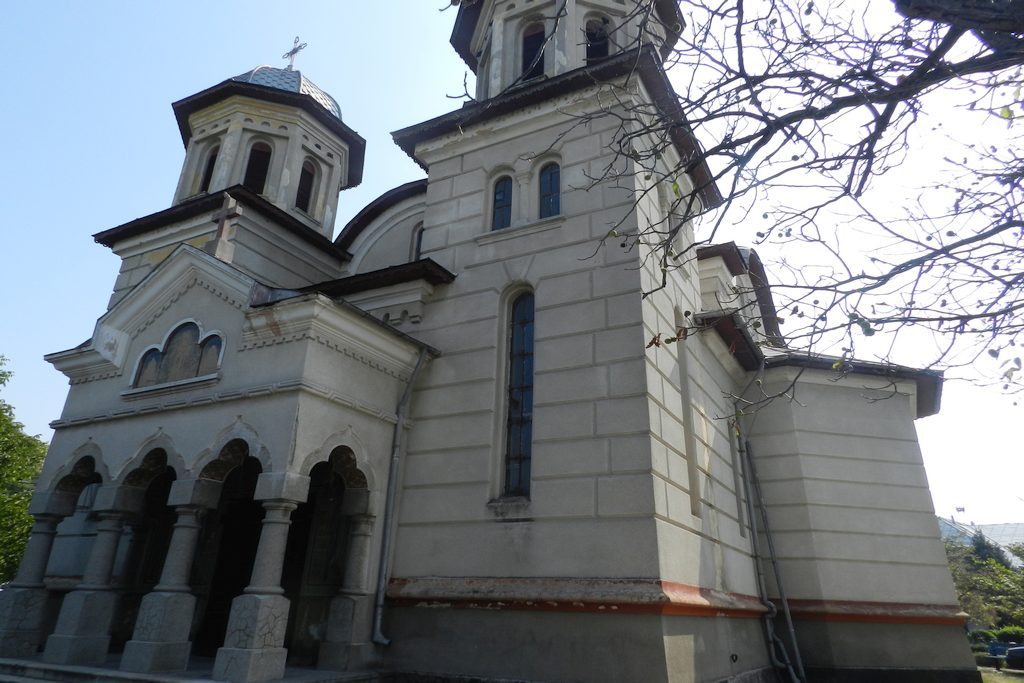

Near the Brâncovenești establishments, in the year 1910 there was finalized the construction of the Saint Nicholas Church, under the shape of a cross and having as titular saint the saint with the same name.
After 48 years from the building up of the church with the titular saint of Saint Nicholas and the Healing Fountain was renovated, being made some alterations in the inside and in the outside. The initiative of the renovation works came from the Priest Smărăndescu helped by the members of the committee.
The renovation founds came from the City Hall of Dăbuleni, the Brâncovenești establishments, the Cultural Center and the church – goers of the congregation.
The renovation works ended on the 1st of December 1945.
Saint Nicholas
All the biographic elements are late and doubtful. Saint Nicholas from Mira is mentioned for the first time in the VIth century, in the Roman Martyrology; it wasn’t about any mention of the saint, it was only about the vision when the Saint Nicholas the Lician would have shown himself in the dreams of Constantin the Great, asking him to forgive the three soldiers who were sentenced to death.
Also in the VIth century, Nicholas the Sionit, bishop of Pinara, would has built up a church in the honor of Saint Nicholas of Mira Licia.
An insignificant cult Saint Nicholas from Mira appears in the Occident, together with Nicolas I, pope of the Rome, who builds up, in the basilica Santa Maria Maggiore, a lateral altar dedicated to his protector saint.
In the Xth century, the cult of Saint Nicholas starts to spread in the Occident: Othon the IIIrd, in Germany, built up a church of Byzantine faith at Burtscheid (near Aachen), which is given the titular saint of Saint Nicholas.
The popular cult of Saint Nicholas dates back to the XIth centurt. The crusaders were bringing the relics from East, and usually the great occidental cities which received the relics of some eastern saint, would have taken as titular saint that saint. Therefore, the crusaders from Bari (in Italy) brought with them the relics of Saint Nicholas from Mira. On those times, the archbishop Nicolas of Venice built up two churches, one in 1036, probably at Bari, and the other one in 1039 at Venice, in which he puts the relics. There are kept two diplomas of this bishop, as well as the names of sixty two men who brought the relics from East. The two churches were consecrated on the 9th of May 1098. The two archbishops, Ilie of Bari and Nicholas from Venice spread the cult of Saint Nicolas in the Occident. Moreover, the pope of Rome, Urban the IInd, known the cult of Saint Nicholas from Bari, where there would have been made miracles, which is why the pope would have honored Ilie with the Omphorion.
After the Christianization of the Slaves, the cult of Saint Nicholas replaced the ones of the god Mikula, god of agriculture.
In the XIIth century, Saint Nicholas enters into the service books from the monastery Sint – Truiden (Belgium). From here, his cult arrives at Roskilde (Denmark), to Vastena (Sweden) and in about forty villages from Island. In the XIIIth century, pieces from the relics of Saint Nicholas arrive in the cathedral from Canterburry, and the cult of the saint starts to spread, because of his influence on the continent.
Saint Nicholas is the spiritual guardian of the Netherlands, of Russian, of the province Lorena, as well as of many other Western – European cities, among which Bari, etc. Saint Nicholas is known as the guardian saint of the wrongfully accused, of the merchants, of the travelers, of the unmarried women, of the brides and, especially, of the little children.
